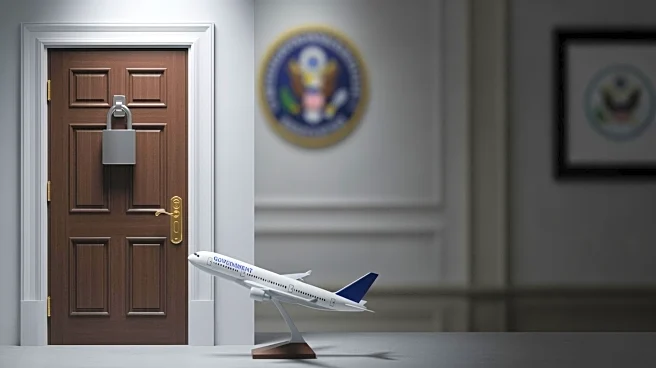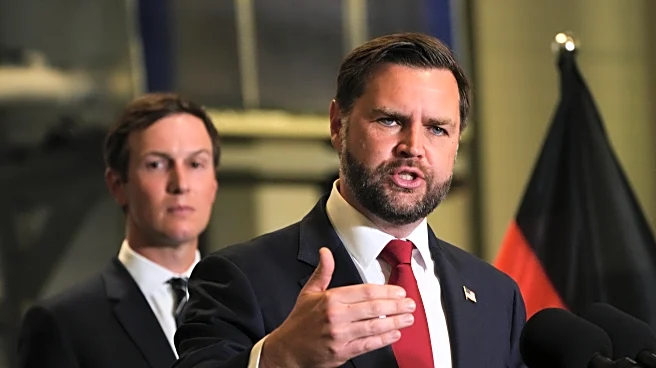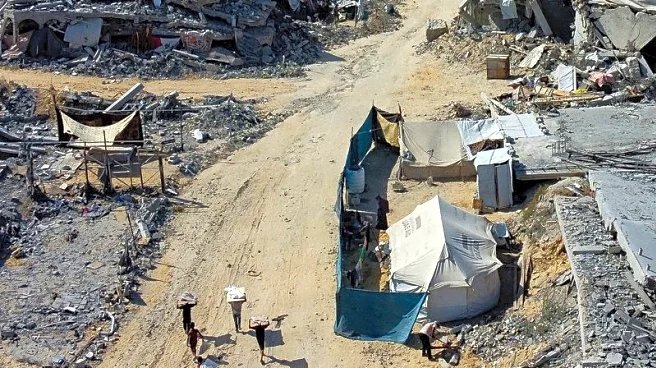What's Happening?
U.S. Vice President JD Vance is visiting Israel to meet with Prime Minister Benjamin Netanyahu amidst threats to a fragile ceasefire. The ceasefire, brokered by the U.S., faces challenges after Israel accused
Hamas of killing two soldiers, prompting Israeli airstrikes that resulted in Palestinian casualties. Despite these disruptions, Vance remains optimistic about the ceasefire's potential for sustainable peace. The visit aims to reinforce the U.S.'s commitment to the deal and address the political dynamics surrounding its implementation.
Why It's Important?
The ceasefire is a critical component of U.S. foreign policy in the Middle East, aiming to stabilize the region and reduce hostilities. The involvement of high-level U.S. officials underscores the importance of maintaining diplomatic pressure to ensure compliance with the agreement. The situation has significant implications for regional security, U.S.-Israel relations, and the broader geopolitical landscape. Successful implementation of the ceasefire could lead to a reduction in violence and pave the way for further negotiations on the future of Gaza.
What's Next?
The next steps involve navigating the complex political landscape to ensure both sides adhere to the ceasefire terms. The U.S. will continue to play a pivotal role in facilitating dialogue and addressing any violations. The presence of key figures like Jared Kushner and Steve Witkoff highlights the administration's commitment to the process. The focus will be on disarming Hamas and establishing a framework for lasting peace, with potential challenges from domestic pressures within Israel and skepticism about Hamas's intentions.
Beyond the Headlines
The ceasefire deal raises questions about the balance between military action and diplomatic efforts in conflict resolution. The political pressure on Netanyahu from both domestic and international fronts could influence his approach to the ceasefire. The situation also highlights the role of U.S. leadership in shaping outcomes in the Middle East, with potential long-term effects on regional alliances and peace initiatives.













